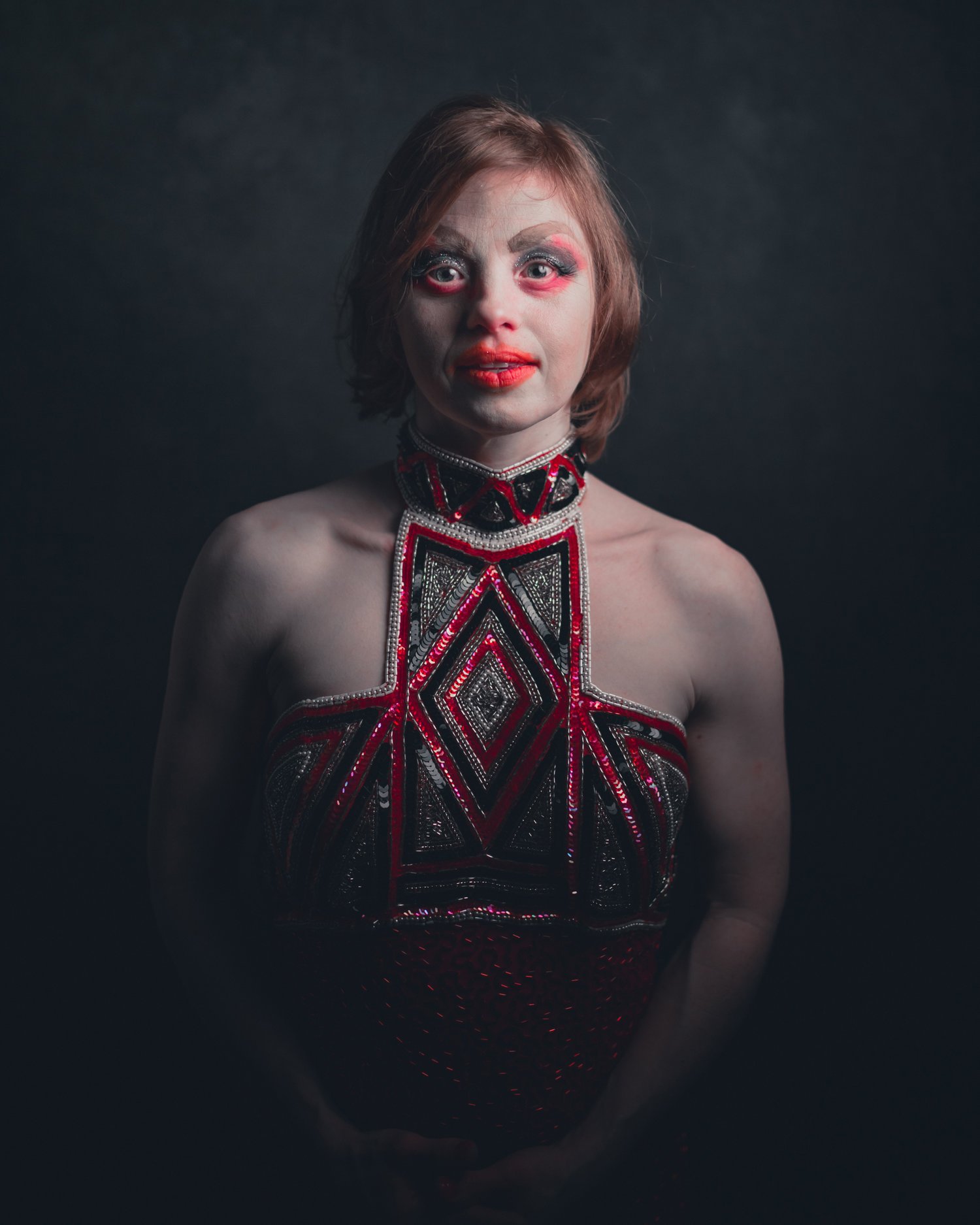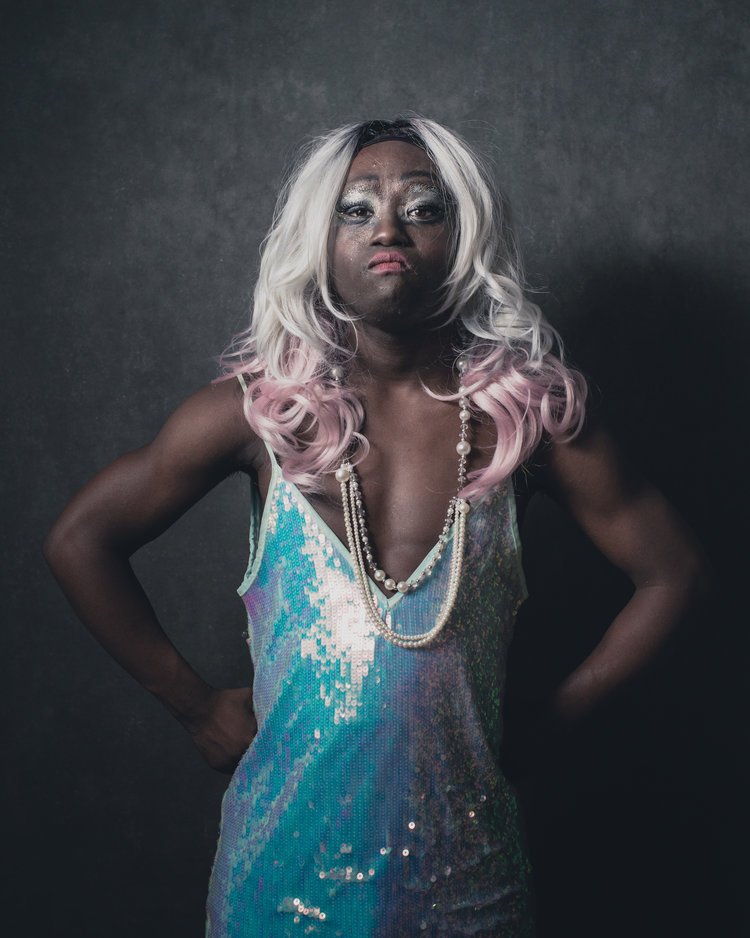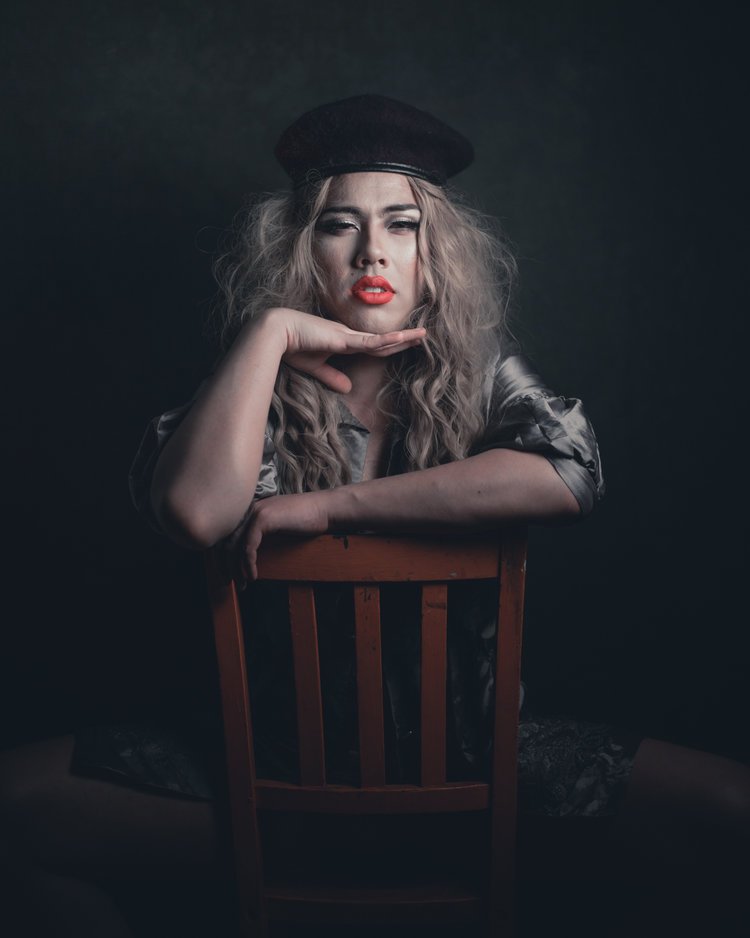Drag Syndrome: Performers with Down syndrome find liberation through Drag
PHOTOS BY DAMIEN FROST
Drag has always been a tool for liberation. For queer people, that often means a platform to unbox themselves from so-called conventional expressions of gender and sexuality.
For others—like the performers of the Drag Syndrome collective making waves across London and Europe—there’s an added layer of liberation. Drag Syndrome offers a platform for people with Down syndrome to shirk societal perceptions of what the condition is; perceptions which often forget that adults with Down syndrome are as multifaceted as anyone—with vibrant creative styles, sexual identities, ambitions and human complexities.
HORRORA SHEBANG
“People with Down syndrome are usually looked at as ‘cute’ and ‘sweet’ and ‘angelic,’” Daniel Vais—the founder of Culture Device, from which Drag Syndrome emerged—tells me over the phone. “Here they have an opportunity to kind of explore deeper and darker fantasy styles...audiences have never seen something like that before, so they’re kind of like suddenly exposed to the fierceness of people with Down syndrome.”
Horrora Shebang has been with Drag Syndrome since the collective’s first performance at Vogue Fabrics Dalston. “It was a banging of a night. It was perfect for me as a performer,” She says. “It was exciting.”
Though she’s the accomplished actor and filmmaker Otto Baxter out of drag, Horrora Shebang is just as ambitious and fierce when in her full form. “I’m a busy queen, currently I'm working on a film and other projects so I got my bitches to bring me costumes. My inspiration for performances are coming from Horrora Shebang. She knows what she's doing.”
Like Shebang, Drag Syndrome is taking off. Having enjoyed high demand in London after glowing reviews of the Vogue Fabrics performance, the group just finished two sold-out engagements in Oslo, with plans to tour Sweden and Dublin in the near future.
Vais stresses that Drag Syndrome is not meant to be a political act so much as it is to empower performers and inform audiences. “It’s a group of artists with Down syndrome performing drag. When I asked the performers what it is to be a drag queen, they said—because they are artists and performers—they said it’s a way to experiment with a different kind of art and performance style... drag gave them an opportunity to do something a bit bolder, a bit more daring, play with gender and sexuality and more avant-garde performance.”
Each performer has researched various styles, methods, and histories of drag to form their own individual drag personas.
The increasing success of Drag Syndrome is matched only by the ambitions of each of its artists. “One of the drag kings that I’m working with, Justin Bond, said she hoped to be invited to RuPaul’s Drag Race as the first drag king,” says Vais. “She wants to kind of do a competition with drag kings as well. She wants to be a famous Down syndrome drag king.”
“We’ve got offers from production companies to do a documentary about it. The artists want to perform as much as possible in the queer community, in the mainstream community, to open eyes of people to the capability of artists with Down syndrome.”
Drag Syndrome is continuing the efforts of the mission of drag has been since its inception: to shatter expectations, defy perceptions, and make the world a fiercer place.
—
Evan Brechtel is a queer writer living in New York. You can find his body of work at www.evanbrechtel.net. @EvanBrechtel.
Photography by Damien Frost
Archive
- February 2025
- November 2024
- October 2024
- September 2024
- August 2024
- July 2024
- June 2024
- May 2024
- April 2024
- October 2023
- July 2023
- June 2023
- May 2023
- April 2023
- March 2023
- February 2023
- June 2022
- April 2022
- March 2022
- January 2022
- December 2021
- October 2021
- September 2021
- August 2021
- July 2021
- June 2021
- May 2021
- April 2021
- March 2021
- February 2021
- January 2021
- December 2020
- October 2020
- September 2020
- August 2020
- July 2020
- June 2020
- May 2020
- April 2020
- March 2020
- February 2020
- January 2020
- December 2019
- November 2019
- October 2019
- September 2019
- August 2019
- July 2019
- June 2019
- May 2019
- April 2019
- March 2019
- February 2019
- January 2019
- December 2018
- November 2018
- October 2018
- September 2018
- August 2018
- July 2018
- June 2018
- May 2018
- April 2018
- March 2018
- February 2018
- January 2018
- December 2017
- November 2017
- October 2017
- September 2017
- August 2017
- July 2017
- June 2017
- May 2017
- April 2017
- March 2017
- February 2017
- January 2017
- December 2015
- November 2015
- October 2015
- September 2015
- August 2015
- July 2015
- June 2015
- May 2015
- April 2015











